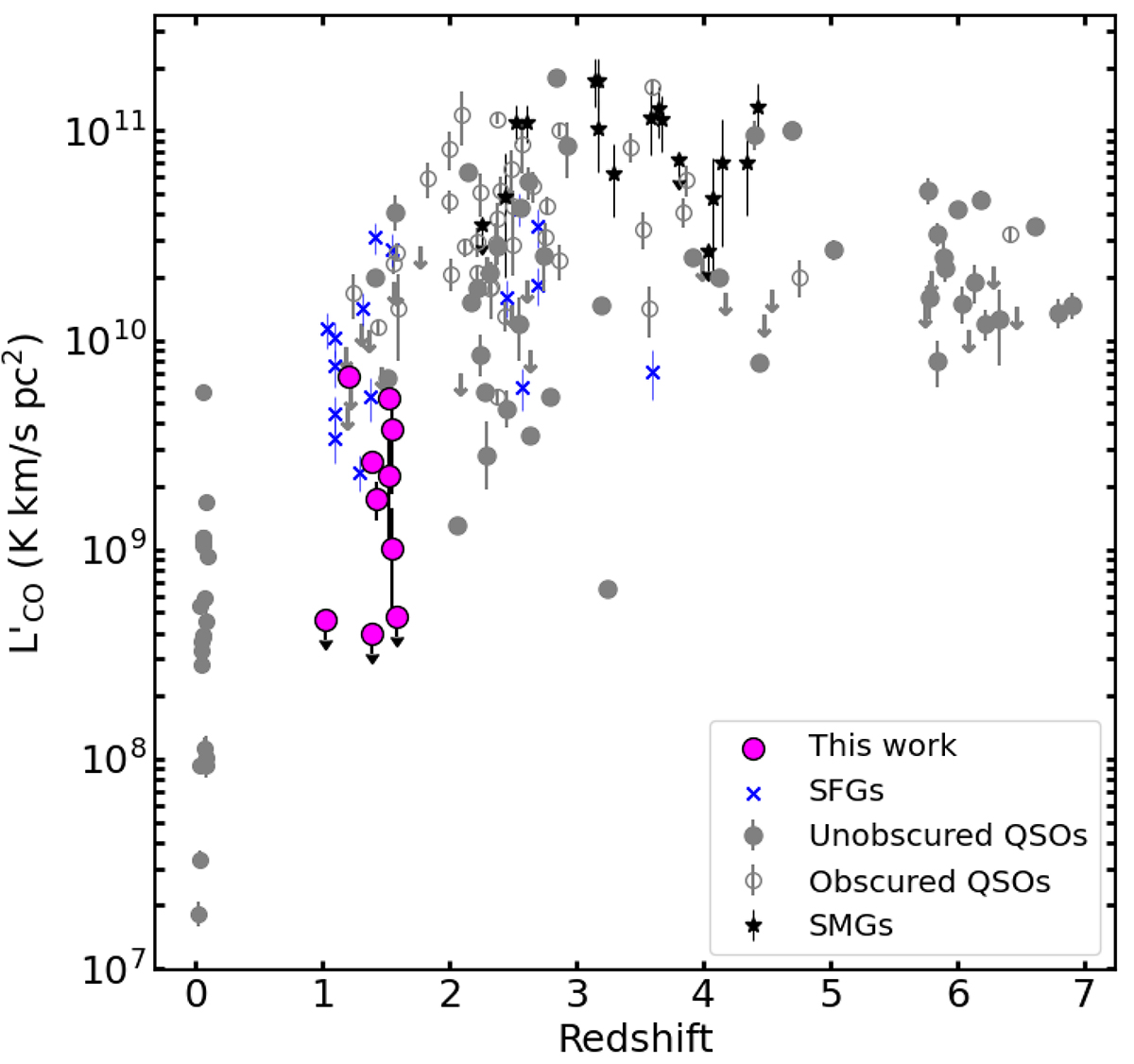Fig. 6.

Download original image
CO(1–0) line luminosities as a function of redshift for our sample. In some cases, error bars are smaller than the marker. The comparison samples are described in Fig. 5. Where necessary, all quantities have been corrected for magnification. On average, the unobscured QSOs targeted in this study have lower CO luminosities than other obscured QSOs and star–forming galaxies at similar redshift. It is thanks to gravitational lensing that we are able to detect these systems with short exposure times.
Current usage metrics show cumulative count of Article Views (full-text article views including HTML views, PDF and ePub downloads, according to the available data) and Abstracts Views on Vision4Press platform.
Data correspond to usage on the plateform after 2015. The current usage metrics is available 48-96 hours after online publication and is updated daily on week days.
Initial download of the metrics may take a while.


